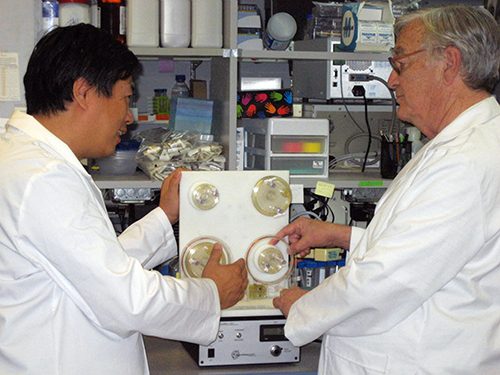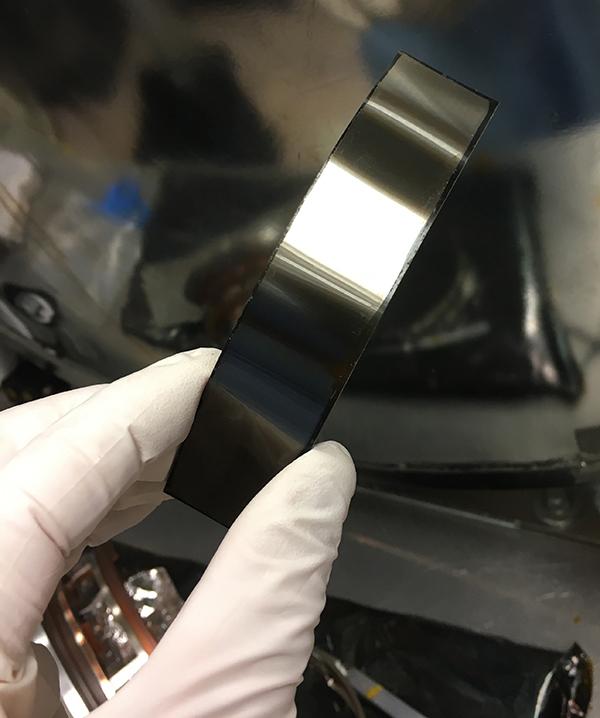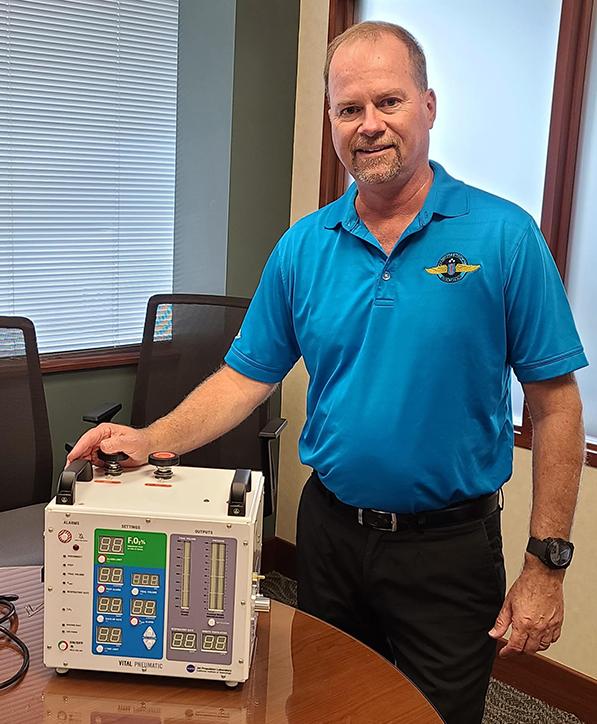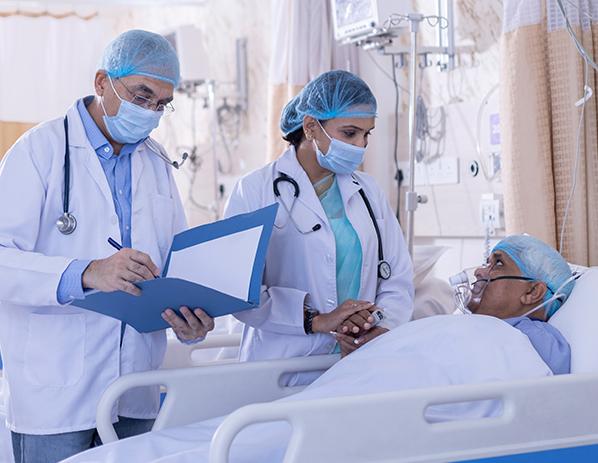
NASA Bioreactors Advance Disease Treatments
Originating Technology/NASA Contribution
The International Space Station (ISS) is falling. This is no threat to the astronauts onboard, however, because falling is part of the ISS staying in orbit.
The absence of gravity beyond the Earth’s atmosphere is actually an illusion; at the ISS’s orbital altitude of approximately 250 miles above the surface, the planet’s gravitational pull is only 12-percent weaker than on the ground. Gravity is constantly pulling the ISS back to Earth, but the space station is also constantly traveling at nearly 18,000 miles per hour. This means that, even though the ISS is falling toward Earth, it is moving sideways fast enough to continually miss impacting the planet. The balance between the force of gravity and the ISS’s motion creates a stable orbit, and the fact that the ISS and everything in it—including the astronauts—are falling at an equal rate creates the condition of weightlessness called microgravity.
The constant falling of objects in orbit is not only an important principle in space, but it is also a key element of a revolutionary NASA technology here on Earth that may soon help cure medical ailments from heart disease to diabetes.
In the mid-1980s, NASA researchers at Johnson Space Center were investigating the effects of long-term microgravity on human tissues. At the time, the Agency’s shuttle fleet was grounded following the 1986 Space Shuttle Challenger disaster, and researchers had no access to the microgravity conditions of space. To provide a method for recreating such conditions on Earth, Johnson’s David Wolf, Tinh Trinh, and Ray Schwarz developed that same year a horizontal, rotating device—called a rotating wall bioreactor—that allowed the growth of human cells in simulated weightlessness. Previously, cell cultures on Earth could only be grown two-dimensionally in Petri dishes, because gravity would cause the multiplying cells to sink within their growth medium. These cells do not look or function like real human cells, which grow three-dimensionally in the body. Experiments conducted by Johnson scientist Dr. Thomas Goodwin proved that the NASA bioreactor could successfully cultivate cells using simulated microgravity, resulting in three-dimensional tissues that more closely approximate those in the body. Further experiments conducted on space shuttle missions and by Wolf as an astronaut on the Mir space station demonstrated that the bioreactor’s effects were even further expanded in space, resulting in remarkable levels of tissue formation.
While the bioreactor may one day culture red blood cells for injured astronauts or single-celled organisms like algae as food or oxygen producers for a Mars colony, the technology’s cell growth capability offers significant opportunities for terrestrial medical research right now. A small Texas company is taking advantage of the NASA technology to advance promising treatment applications for diseases both common and obscure.
Partnership
In 2002, Houston-based biotechnology firm Regenetech Inc. (then called BioCell Innovations) acquired the licenses for the NASA bioreactor and a number of related patents for use in the burgeoning field of adult stem cell research. (Unlike ethically controversial embryonic stem cells, adult stem cells are harvested from sources such as blood and bone marrow.) Employing a novel business model that takes advantage of sponsored research agreements with major medical institutions like the University of Texas M.D. Anderson Cancer Center in Houston, Regenetech was able to begin testing and adapting the bioreactor’s capabilities for use with human stem cells with a first year budget of only $100,000. A NASA Space Act Agreement that saw the company share resources with Goodwin at Johnson, as well as additional licensing agreements between the company and the Agency, enabled Regenetech to further complement the bioreactor with its own proprietary improvements.
Product Outcome
Regenetech has built upon its licensed NASA technology to create a thriving intellectual property business that is providing researchers with the tools to make adult stem cell therapy viable for the public.
Adult stem cells are found in some types of body tissue. These cells are multipotent, meaning they can differentiate into a specific range of specialized cells. This makes them appealing possibilities for treating diseases—the stem cells differentiate into healthy replacements for sick or damaged cells. Blood stem cells, for example, can transform into red blood cells, white blood cells, and platelets; these cells could provide a potential treatment for blood diseases like sickle cell anemia.
One of the richest sources of adult stem cells is bone marrow.
“There are about 70 different conditions and diseases where bone marrow stem cells have been used to regenerate tissue or treat disease,” says Donnie Rudd, Regenetech’s chief scientist and director of intellectual property. Stem cells can be harvested from a patient’s bone marrow through a procedure called bone marrow apheresis—a process that like any medical procedure carries some level of risk. The problem with alternative methods of adult stem cell harvest is getting enough of the cells to have therapeutic value, which is where Regenetech’s Intrifuge cellXpansion technology comes to bear.
“We can take a sample of peripheral blood from a patient’s arm, separate the stem cells, put that into our improved NASA bioreactor, and then multiply the cells to a therapeutic level without all the trauma of bone marrow apheresis,” says Rudd.
Regenetech’s Intrifuge rotating wall bioreactor cradles a soup can-sized, rotating chamber that is used to expand, or multiply, harvested stem cells. The cell sample, contained in a growth fluid, is placed in the rotating chamber equipped with a membrane for oxygenation and gas exchange. As the chamber rotates, the cells are suspended in a constant state of falling—similar to an object in space orbit. This condition is enabled by a rotating inner wall that reduces shear from the nutrient fluid. In this simulated weightlessness, the cells do not get damaged and die from bouncing off the sides of the chamber. They multiply rapidly (50–200 times in size in as few as 6 days) into healthy populations, providing a quicker and cheaper source of stem cells for therapy or medical research. Regenetech’s cellXpansion process is being tested for further enhancement by a NASA-developed electromagnetic coil that surrounds the canister and which NASA developed to stimulate nerve cell growth. The coil, also patented by the NASA bioreactor development team and licensed by Regenetech, produces time varying electromagnetic conditions.
Regenetech started producing revenue only 5 years after its founding, and since acquiring the original NASA licenses, it has developed over 300 of its own patents and patent applications and has licensed out its technologies on a global scale. The company generates its revenue through research partnerships and licensing its patents to stem cell researchers in pursuit of treatments for everything from heart disease to diabetes to liver cirrhosis. It is currently engaged in sponsored research agreements with major universities to develop stem cell therapy for type 1 diabetes, study blood stem cells, and create stem cell veterinary orthopedic treatments using the company’s Intrifuge cellXpansion technology.
Through an agreement with NASA, Regenetech is also able to offer significant help to researchers pursuing treatments of rare diseases that affect less than 200,000 people in the United States and thus do not offer enough return on drug development investment. NASA allows the company to charge as little as $1,000 to $10,000 to license its NASA-developed technologies to researchers of such rare diseases.
“Our relationship with NASA has allowed us to get this technology out into the field for those diseases that otherwise might never be treated,” says Rudd.
Intrifuge™ and cellXpansion™ are trademarks of Regenetech Inc.

Regenetech scientists examine the company’s bioreactors. Licensed from NASA, the bioreactor technology allows for rapid, healthy cell growth, providing for a quicker, cheaper source of adult stem cells for therapy and medical research.

Cells grown in microgravity (A) tend to become more spherical than those grown on Earth (B). This demonstrates that tissues can grow and differentiate into distinct structures in microgravity. NASA’s rotating wall bioreactor simulates weightlessness to mimic this effect on Earth.













